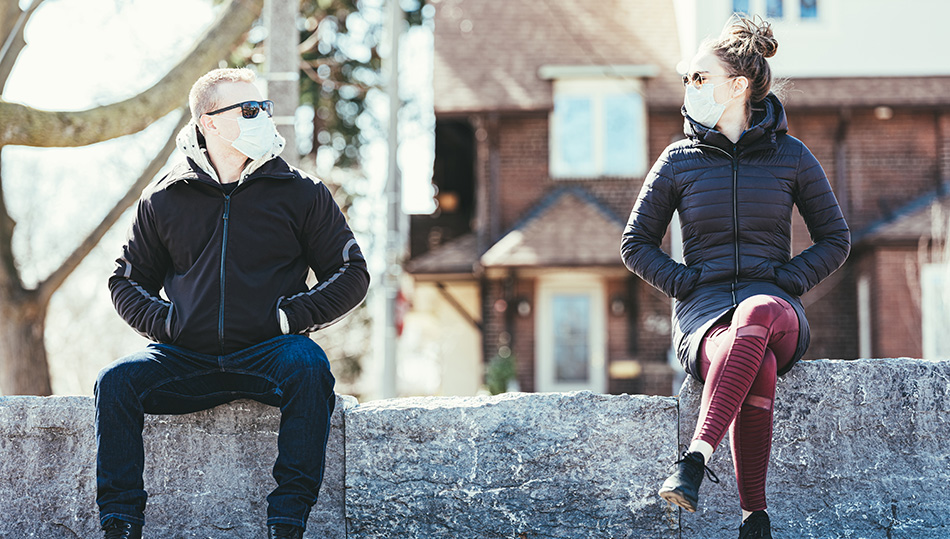
08 Apr Better Six Feet Apart than Six Feet Under
The COVID-19 crisis has left many of us scouring our screens for information. We can attest to this because website traffic to the PERF blog has doubled in the last 10 days! At the time of writing, there are at least 34 states in the US under legal orders – or strong recommendations – to shutdown non-essential businesses, ban group events and to shelter in place. This is especially important for high-risk individuals such as the elderly and those with pulmonary conditions.
There are a lot of reasons why SARS-CoV2 virus (which causes COVID-19 disease), unlike other viruses before it, has resulted in the current pandemic. One reason is that the virus is so small that it can “aerosolize” – meaning that it can float in the air – and may stay in the air for approximately 3 hours after an infected person has left. It can also remain viable on surfaces for several days. Many infected people may not show symptoms, and an infected individual can still pass on active virus for as long as 8 days after symptoms have ended. And, because the virus is new, we (the human race) have yet to develop immunity. Safer-at-home orders are designed to respond to these characteristics, which make the virus so effective as a communicable disease. The orders aim to slow down the spread of the virus in the community and lessen the likelihood our hospitals will become overwhelmed, and so there will be a bed for anyone who needs it. China’s and South Korea’s “extreme” isolation measures are working — this should be our guide.
In such uncertain times, we’re seeking leadership from our federal, state and local government. But few leaders are reading from the same script. There are so many different messages bombarding our increasingly online existence, that the single most important message – the one that will save lives – is lost. That message is: “Six feet apart or six feet under”.
That was the message from Dr. Arthur Wisot MD, local resident, retired physician and medical communication expert (LA Times, 3/25/2020). Dr. Wisot also recommends that people with pulmonary problems should not venture out of the house. Minimize contact with others who could be infectious without even knowing it. But, he says, if the trip is absolutely necessary, then you should at least wear a surgical mask. Unlike N95 respirator mask, a surgical mask cannot effectively filter out the tiniest drops of an airborne virus, but they serve as a reminder that one should not touch one’s face close to the eyes, nose, and mouth. Masks also signal to others to maintain a physical distance. A mask is NOT a replacement for social distancing. Even wearing a mask remember six feet apart or six feet under.
The decision to recommend that everyone wear a surgical mask out when going out of the home is currently being considered by the Federal Coronavirus Task Force. The use of surgical masks by all individuals (including coronavirus carriers who don’t have symptoms) will help to decrease transmission by decreasing the exhalation, coughing or sneezing of aerosol droplets containing the virus. The timing of this recommendation will depend on whether there is an adequate supply of masks prioritized for our frontline healthcare workers and first responders as well as those with symptoms of viral infection. In the meantime, the most effective thing we can all do is to maintain a physical distance that decreases the chance of exposure to aerosolized droplets.
I don’t need to remind you, that this virus can kill. Get the message? We know that those of you who read our blog already have “got the message”. We also know you are doing everything you can to protect yourselves and others. So please, pass this message on. Let’s combat this virus by making this message go viral. Remember, better 6 feet apart than 6 feet under.
Harry Rossiter, PhD
Member, PERF Board





No Comments